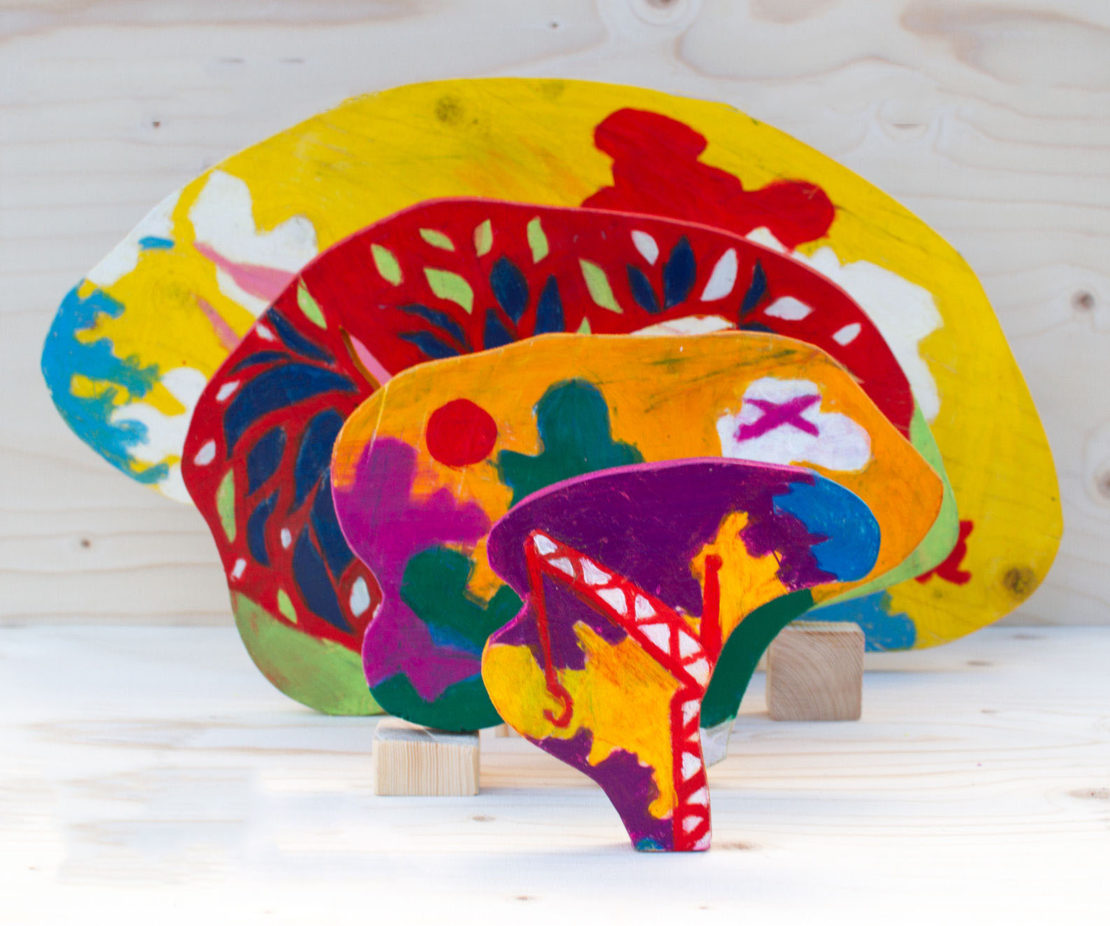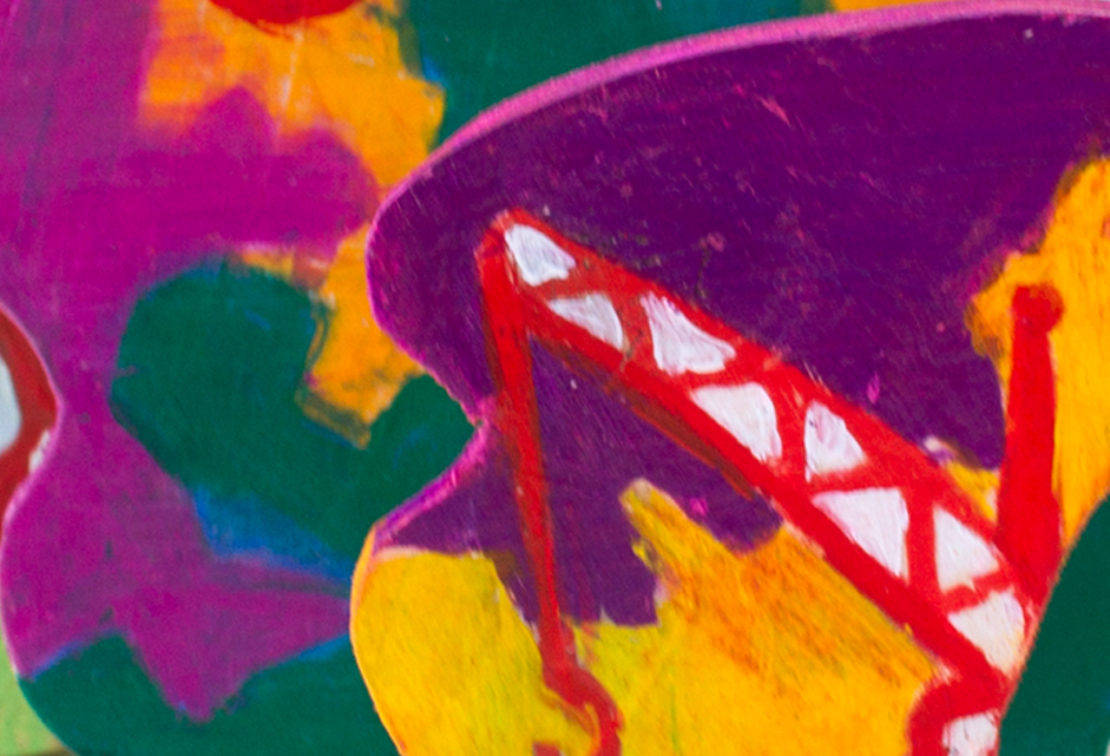
The billion piece puzzle
Understanding how the most complex object in the known universe – the human brain – works is the biggest challenge of our time. This task, likened to the Space Race of the 60s, is far more challenging than putting a man on the moon. Huge amounts of funding has been dedicated to projects in the US, Europe and Japan to 'map the brain'. The hype and ambition is enormous:
"Every dollar we invested to map the human genome returned $140 to our economy... Today, our scientists are mapping the human brain to unlock the answers to Alzheimer's… Now is the time to reach a level of research and development not seen since the height of the Space Race."
- Barack Obama, 2013 State of the Union address
The hope with mapping the brain is that scientists might eventually be able to understand the details of its neural pathways and, from that, create simulations of the brain which can be used to create models of disease states, helping them understand what exactly happens when things go wrong in the brain. The aim is to understand how this grey mass of neurons that weighs about three pounds (less than 2 per cent of an average person's weight) and which seems anatomically so simple can give rise to the complex functions of the brain and control everything we do (or don't do for that matter).
Understanding how the most complex object in the known universe – the human brain – works is the biggest challenge of our time

How did we get here?
In 2010 the European Commission's Future & Emerging Technologies (FET) Flagship Initiatives competition put out a call for proposals for projects that have the potential to solve big scientific and technological challenges, create a social and technological shift and generate significant economic growth.
Six projects were shortlisted in 2011. Over a ten year period and with a budget of over €1bn each, the two winners would be starting one of the biggest EU-funded initiatives ever. The last time the EU invested into a project of similar size was when it contributed to building the Large Hadron Collider in 1998. It took about a decade to construct and cost almost $5bn. The International Space Station also took 10 years to develop at a cost of $100bn and has an annual running cost of $2bn; the European share of this over a 30 year period is around €8bn.
The two winners of the FET competition were announced in 2013. One of the winners was Graphene. Made of a single layer of carbon atoms, it is the thinnest material ever obtained (a million times thinner than human hair), yet stronger than diamond. Its properties make it extremely attractive as research material for new technologies that could revolutionise multiple industries.
The other winner was the Human Brain Project.
Can Europe find the map?
The goal of the Human Brain Project (HBP) is to pull together all our existing knowledge about the human brain and to reconstruct its inner anatomy, piece by piece, in supercomputer-based models and simulations. In essence, the HBP is aiming to provide researchers worldwide with a tool to help understand how the brain really works and how its associated diseases come about.
The multi-country project is led by Henry Markram, Professor of Neuroscience at École Polytechnique Fédérale de Lausanne (EPFL), Switzerland. The nascent project, however, has already encountered strong criticism from the scientific community. Many laboratories refused to join the project when it was first submitted because of its overly narrow approach. "The main apparent goal of building the capacity to construct a larger-scale simulation of the human brain is radically premature," Peter Day, director of UCL's computational neuroscience unit told the the Guardian last year.
In July 2014, many in the scientific community raised their concerns in an open letter addressed to the European Commission, stating: "We believe the HBP is not a well-conceived or implemented project and that it is ill suited to be the centrepiece of European neuroscience. We are particularly concerned about the plan to tie a substantial portion European member states' neuroscience funding to the HBP through so-called 'partnering projects'." The scientists who signed the open letter pledged not to collaborate with the HBP unless their concerns were addressed, which also took issue with the review panel; they argued that it needed to be independent and composed of highly regarded members of the scientific community and that the review process needed to be transparent. The EC responded by establishing an independent committee which was to investigate and mediate on the dispute.
The committee's subsequent report released in March 2015 stated the changes the HBP needed to make in order to get the project back on track and earn back trust. These included changes to the structure of the review board and a re-writing of the 'framework partnership agreement' which is due to take place later this year.
The project got off a rough start, but its aims remain lofty, with the hope that the initiative could have a major impact on the future of neuroscience and medicine. Of course, this will be far from straightforward.
The Human Brain Project is aiming to provide researchers worldwide with a tool to help understand how the human brain really works and how its associated diseases come about

What are scientists trying to achieve?
Scientists have studied the relationship between the structure and function of the human brain since the 1800s, but so far what we know about the brain's functions can still be considered as limited. Researchers are only just beginning to understand the process underlying cognitive functions in primates such as thinking and planning. Good progress has been made in understanding how the sensory and motor functions of simple organisms such as worms, flies, and mice work and interact, and this can help provide clues about how the human brain works. Such studies have helped develop the technological and methodological approaches to researching brain function, which could be useful in human brain mapping studies.
The idea of mapping the brain isn't a new one. The 'father of neuroscience', Santiago Ramon y Cajal, argued at the turn of the 20th century that the brain was made up of neurons woven together in a highly specific way. He was proven right in March 2012: a study released by the Human Connectome Project (HCP) detailed how brain circuitry is organised more like Manhattan's street grid than London's chaotic tangle of random roadways.
The HCP, which was launched in July 2009 by America's National Institutes of Health with an initial $30m budget over five years, aims to map all of the neural pathways that underlie the myriad of human brain functions – in effect, giving us the first detailed, accurate 'wiring diagram' of the brain. Its goal is to decipher the electrical signals that zap through the brain to generate thoughts, feelings, and behaviours.
Much like the Human Genome Project was used to map all of the genes in the human body, the idea behind mapping the human connectome is that it will map all the connections in a living human brain. If successful it would allow scientists to peek into major brain pathways, zoom into a region to explore cells in that region, and decipher how the pathways are related to specific functions. Although the wiring diagram are static snapshots of the wiring of the brain at one particular moment, the challenge for neuroscientists is to go from these static images to dynamic images of the brain – to study the brain while in action and thus help us understand how the brain works.
The hope is that successfully mapping the human brain will lead to huge breakthroughs in understanding how the brain produces consciousness; what makes us individuals, with our own, unique personalities; how psychiatric disorders develop, and more. But this is a puzzle with billions of pieces.
How will they do it?
The brain is made up of billions of nerve cells, called neurons. The exact number of neurons in the brain isn't known. The figure of about 100bn is often given, but a more accurate estimate is probably about 86bn. Each neuron itself is a very complex little device. Neurons communicate by sending tiny electrochemical signals (nerve impulses) from one neuron to the next, which happens in fractions of a second. Neurons typically fire 5-50 times a second, with millions and even billions of them pulsing in harmony with each other. In the half second it takes you to clap your hands, billions of synapses (the space between two connecting neurons) have activated in your brain. Whenever a toddler learns a new task such as lifting a cup to drink from, the neurons that send and receive information about the task become more and more efficient. Over time, with the repetition of the task, the neurons communicate easier and faster and eventually this communication line becomes stronger (wired together) creating a new connection and pattern in the brain. This, in essence, is learning.
The aim is to try to discover the detailed 'wiring' of how the neurons are connected together and relating this 'wiring' to actual functions, such as seeing, thinking and so on.
In a first step neuroscientists from the Massachusetts Institute of Technology (MIT) and the Max Planck Institute for Medical Research in Germany released findings in 2013 in which they detail how they have they have mapped all the wiring among 950 neurons within a tiny patch of mouse retina, using a combination of human and artificial intelligence. "Composed of neurons that process visual information, the retina is technically part of the brain and is a more approachable starting point," said Sebastian Seung a professor of computational neuroscience at MIT and one of the project's lead scientists. Mapping 950 neurons, which was a 117-micrometre-by-80-micrometre patch of tissue (a micrometre is a thousand times smaller than a millimetre) might not sound much, but it did require the help of 225 undergraduate students in Germany who spent more than 20,000 hours (just over two years) working on it.
Srini Turaga, Group Leader at the Howard Hughes Medical Institute, Janelia Research Campus in Virginia and a lead researcher on the mouse retina study, explains that a 'brain map' can mean a number of different things: it can be a map that shows what the role of each brain region is; it can be which genes are expressed where in the brain; which brain regions are connected to which; which cell types are present where in the brain; finally a brain map can also describe the connectivity, at the level of single neurons, for small parts of the brain.
Scientists have studied the relationship between the structure and function of the human brain since the 1800s, but so far what we know about the brain's functions is limited

Who else is trying to decode the brain?
To map the whole human brain with its billions of neurons will be a monumental effort, so naturally HBP isn't the only project with this goal. Japan's 10-year-long effort, called Brain Mapping by Innovative Neurotechnologies for Disease Studies (Brain/MINDS), was launched in 2014 and is supported by the Ministry of Education, Science, and Technology (MEXT).
In April 2013 President Obama announced the BRAIN (Brain Research through Advancing Innovative Neurotechnologies) initiative. The overall aim is to understand the normal human brain in order help researchers find new ways to treat, cure, and maybe even prevent brain disorders, such as Alzheimer's disease and epilepsy. To kickstart the project, $100m was provided by three key government institutions: The National Institutes of Health (NIH), the Defense Advanced Research Projects Agency (DARPA), and the National Science Foundation (NSF).
Private sectors partners have also made financial commitments: the Allen Institute for Brain Science has committed to more than $60m a year to support the BRAIN Initiative. Howard Hughes Medical Institute (HHMI), the largest nongovernmental funder of basic biomedical research in the US, is putting in $30m a year. The Kavli foundation, which promotes and supports science, is contributing $4m per year.
Despite similar ultimate goals, how the European, American and Japanese projects are going about understanding brain function is quite different. The BRAIN initiative is focusing initially on developing the suite of tools needed to simulate the brain; the European scientists are looking to creating computational models of the brain’s neural circuitry.
In Japan, the team is largely focused on defining the circuitry of the non-human primate brain. Professor Okano, of the Japanese project's two leaders explains his team’s approach: "It's a useful model to fill the gap between the rodent and human brains, which are so different. Japanese groups have pioneered the genetic engineering of the common marmoset, a New World monkey, which puts us in a unique position to contribute to the international brain-mapping movement. We believe research on nonhuman primates is essential for understand the human brain and for developing knowledge-based strategy for diagnosis and treatment of psychiatric and neurological disorders."
What does the future hold?
The complexity of the brain and the goal of understanding it requires a complex task force involving neuroscientists as well as physicists, computer scientists and others who are developing the technologies that will allow researchers to examine the brain up close.
In March 2014, government officials from the US and EU hinted that they may ultimately collaborate on their brain projects. Although an official collaboration has yet to be announced, some researchers working on BRAIN and HBP have already begun to coordinate their research informally. The Allen Institute for Brain Research has published papers on neural simulations produced in collaboration with the HBP.
Nobel Prize winner Dr Eric Kandel, a professor at Columbia University and director at the Kavli Institute for Brain Science, believes it is impossible to put a timeline for major breakthroughs in these endeavours. Mapping the brain is likely much more complicated than mapping the human genome, with Kandel suggesting that a complete understanding of the human brain is not going to be achieved in 20 or 30 years, adding, "I would say it will be between 50 and 100 years".
What we now see are philosophers stepping into the lab to run experimental studies, while cognitive neuroscientists are involved in theory

But, what about mind?
Of course, mapping the brain's neurons doesn't necessarily produce or explain consciousness. Many argue that such endeavours are reductive and risk ignoring thousands of years of thinking into the nature of the mind.
Amid the hubbub for mapping the brain, came The Human Mind Project. Launched in 2013, it is one of the Central Academic Initiatives of the School of Advanced Study at the University of London. Though working on a far smaller scale than HMB or BRAIN, the group seeks to highlight the importance of the arts and humanities in understanding the mind, integrating science and humanities in this process. The neuroscientist Sir Colin Blakemore leads the group, and its advisory board includes renowned thinkers from the humanities, life sciences and beyond.
Dr Mattia Gallotti, who manages The Human Mind Project, offered his thoughts on what this may entail:
“In his personal account of the birth of modern cognitive science, George Miller reminded us that what has been called a cognitive 'revolution' was, in fact, a counter-revolution. In the decades preceding 1956, the annus mirabilis in the history of cognitive science, the behaviourist movement had held that all there is to the mind, is behaviour: our mental life is not publicly observable, it can then only be explained scientifically by outward behaviour.
But before behaviourists held sway, accounts of the richness and workings of mental activity went far beyond behaviour – there is much more to the mind, of course. In fact, what people of the intellectual stature of Noam Chomsky and Jerry Bruner, Alan Newell and Herb Simon, not to mention Miller himself, did in the 1950s was to re-direct scientific attention to the mechanisms that create forms of behaviour 'from within' the mind. The effect was to initiate a paradigm shift that would set psychology back on an earlier trajectory. There was no revolutionary novel conception of the mind on the table, back then; rather the realization that we still need concepts of the mind, concepts of seemingly 'invisible' cognitive entities and processes, to make sense of behavioural data in a scientific manner.
Sixty years later, is the brain revolution a counter-revolution? The biggest and best-funded initiatives of the day, such as the EU's Human Brain Project, suggest that the study of the mind is now a highly specialised and financially demanding collaborative enterprise, carried out using sophisticated technological devices for experimentation, informed by computational models and ultimately aimed to simulate the function of the human brain. Scientists have contributed an astounding mass of data about the location and structure of mental processes. But whether this ever-growing body of neural findings and insights has fed back and developed into a critical mass of brand new knowledge about the mind – or will do, soon – is still a matter of questioning and cultural struggle.
It is fair to say that the 'brain age' has not generated yet a revolution in the way in which we think about the mind as being what it is. Actually, the new language carries remnants of the past. We hear a multitude of voices from philosophy and science repeating the mantra that there would be no mind without the brain, but there seems to be more to the reality of mental phenomena than neural evidence can show at the appropriate level of description. We are all naturalists of some stripe, after all – but some of us do not really buy into the story of a psychology fully reduced to neuroscience .
What, then, is revolutionary about the current neuro-turn, if anything? For one thing, the method of investigation shows something of a break from the past. Interdisciplinarity has always been the name of the game across the cognitive sciences, with anthropologists and computer scientists, as well as psychologists and philosophers, contributing their own know-how and ideas to a common enterprise – the more integrated the better, given the need for a holistic and multi-level description of the architecture of the mind. But what we now see are philosophers stepping into the lab to design and run experimental studies, while cognitive neuroscientists are ever more involved in conceptual efforts of theory construction, as if there were really no dividing line between things, and ways of knowing things, which we are used to think as falling under classic disciplinary domains.
To question the legitimacy of disciplinary boundaries between conceptions of the mind across the arts and humanities and the sciences, is not to deny that there are relevant differences, which probably are here to stay. It is, rather, to refresh and problematise the very notion of an inter-disciplinary space, a space in between disciplines. Perhaps the brain age has the potential to bring about a genuinely 'third-cultural' approach to the mind – one that challenges old-fashioned divides between nature and culture, naturally and seamlessly integrating ideas and methods. If so, we do live in exciting times, and the revolution is in progress."